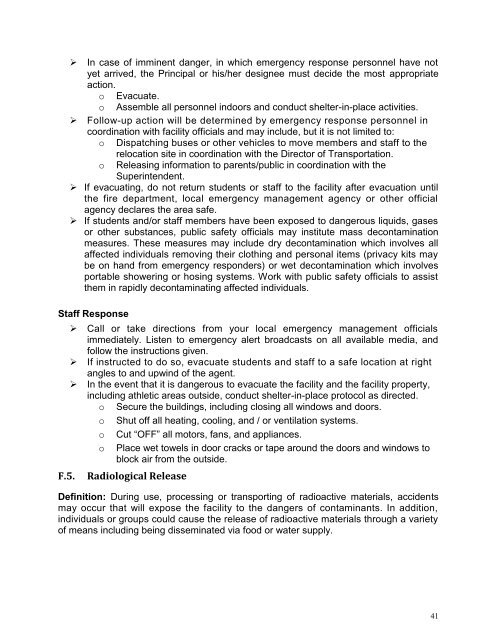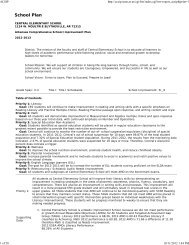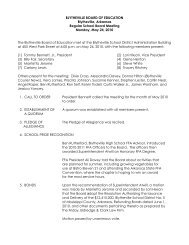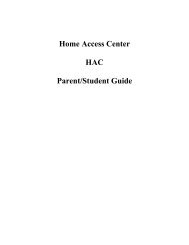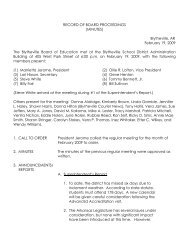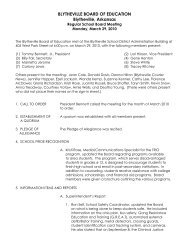District-Wide Safe Schools and Crisis Plan - Blytheville Public Schools
District-Wide Safe Schools and Crisis Plan - Blytheville Public Schools
District-Wide Safe Schools and Crisis Plan - Blytheville Public Schools
You also want an ePaper? Increase the reach of your titles
YUMPU automatically turns print PDFs into web optimized ePapers that Google loves.
In case of imminent danger, in which emergency response personnel have not<br />
yet arrived, the Principal or his/her designee must decide the most appropriate<br />
action.<br />
o Evacuate.<br />
o Assemble all personnel indoors <strong>and</strong> conduct shelter-in-place activities.<br />
Follow-up action will be determined by emergency response personnel in<br />
coordination with facility officials <strong>and</strong> may include, but it is not limited to:<br />
o Dispatching buses or other vehicles to move members <strong>and</strong> staff to the<br />
relocation site in coordination with the Director of Transportation.<br />
o Releasing information to parents/public in coordination with the<br />
Superintendent.<br />
If evacuating, do not return students or staff to the facility after evacuation until<br />
the fire department, local emergency management agency or other official<br />
agency declares the area safe.<br />
If students <strong>and</strong>/or staff members have been exposed to dangerous liquids, gases<br />
or other substances, public safety officials may institute mass decontamination<br />
measures. These measures may include dry decontamination which involves all<br />
affected individuals removing their clothing <strong>and</strong> personal items (privacy kits may<br />
be on h<strong>and</strong> from emergency responders) or wet decontamination which involves<br />
portable showering or hosing systems. Work with public safety officials to assist<br />
them in rapidly decontaminating affected individuals.<br />
Staff Response<br />
Call or take directions from your local emergency management officials<br />
immediately. Listen to emergency alert broadcasts on all available media, <strong>and</strong><br />
follow the instructions given.<br />
If instructed to do so, evacuate students <strong>and</strong> staff to a safe location at right<br />
angles to <strong>and</strong> upwind of the agent.<br />
In the event that it is dangerous to evacuate the facility <strong>and</strong> the facility property,<br />
including athletic areas outside, conduct shelter-in-place protocol as directed.<br />
o Secure the buildings, including closing all windows <strong>and</strong> doors.<br />
o Shut off all heating, cooling, <strong>and</strong> / or ventilation systems.<br />
o Cut “OFF” all motors, fans, <strong>and</strong> appliances.<br />
o Place wet towels in door cracks or tape around the doors <strong>and</strong> windows to<br />
block air from the outside.<br />
F.5. Radiological Release<br />
Definition: During use, processing or transporting of radioactive materials, accidents<br />
may occur that will expose the facility to the dangers of contaminants. In addition,<br />
individuals or groups could cause the release of radioactive materials through a variety<br />
of means including being disseminated via food or water supply.<br />
41


